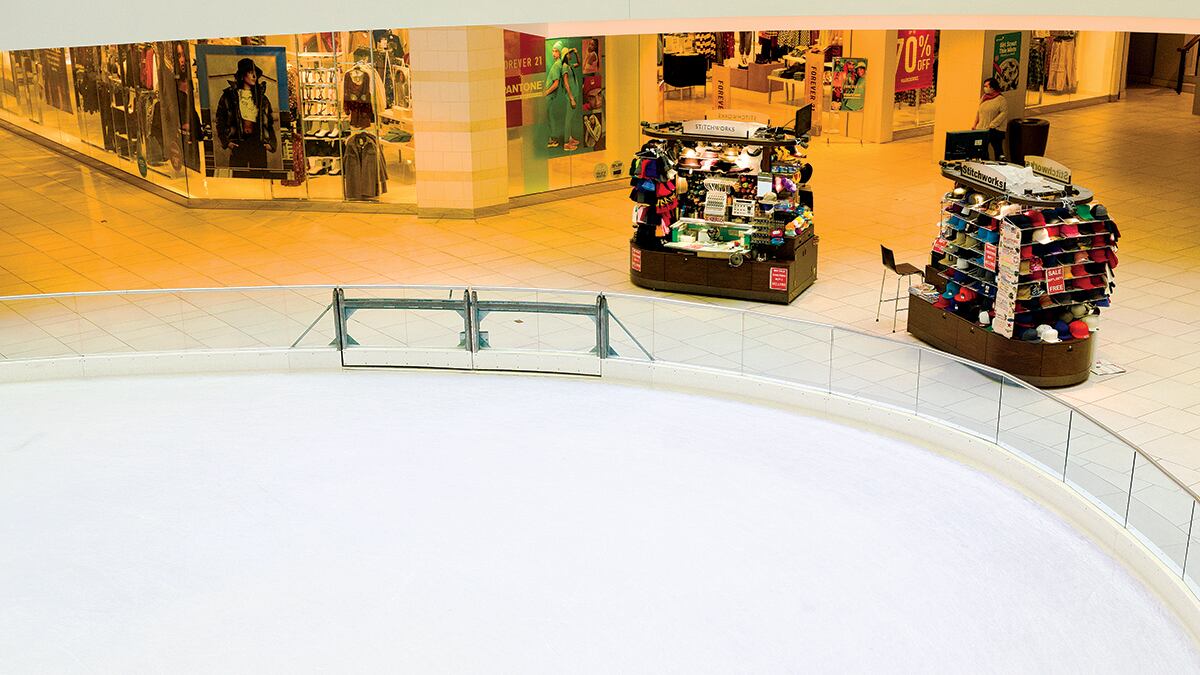The biggest opportunity to reshape Portland’s landscape currently smells like a Cinnabon.
That’s right: Those 23 acres of prime real estate are Portland’s way out of civic malaise.
Ever since lenders decided to foreclose on the Lloyd Center Mall, Portlanders have flooded social media with tear-stained memories of childhood ice-skating parties and caramel corn feasts.
Most of those people probably haven’t visited for a while.
For more than a decade, Lloyd Center has degraded into a carjacker and shoplifter’s paradise. The pandemic accelerated that decline, but Lloyd Center was struggling well before then. (In 2019, this newspaper published a cover story wondering if the mall would last another Christmas.) The four anchor stores—Sears, Nordstrom, Marshalls, Macy’s—have all abandoned ship.
A Honey Baked Ham kiosk is one of few signs of holiday bustle. Only a third of the mall’s storefronts are occupied, and several of the shops lower their security gates even during posted business hours.
It is a tawdry end to one of Portland’s most beloved, yet much-maligned, institutions, where people have been eating Joe Brown’s Carmel Corn since 1960, where Tonya Harding learned how to skate, and where you could get a Jamba Juice within walking distance of the Willamette River.
KKR, the New York City lender that is foreclosing on Lloyd Center, said little about what it planned to do with the 23-acre property, beyond a bit of real estate jargon that could mean almost anything: “We intend to foreclose and to take ownership of the asset, enabling us to optimize value over the near and medium term,” KKR executive Patrick Mattson said.
Likely translation: We’re going to put some lipstick on this pig and sell it for bacon.
Lloyd Center is big. Eighteen square city blocks big. A plot of land that size is exactly the kind of blank slate an aimless city needs to excite its imagination.
It’s no secret that Portland needs a jolt. The pandemic exposed political rifts, social ills, and a lack of leadership. But it also provided an opportunity to reconsider how we should use communal spaces—the places we couldn’t gather around for two years.
The Lloyd District has long been a disappointment. Its namesake, Ralph Lloyd, was a California rancher who struck oil under his land and bought a huge swath of the city he loved: Portland. He thought it would be the new Los Angeles. He died, but his daughters pursued his vision, hired the architect who would soon after help design Seattle’s Space Needle, and, in 1960, built Lloyd Center, touted as the largest shopping mall in the world at the time.
Its windowless walls loomed over the neighborhood like the sides of an oil tanker.
“When they built the Lloyd Center, they turned their back on Broadway,” says Roslyn Hill, a landscape designer known as the “Queen of Alberta” because she grew up in the neighborhood and returned to spearhead its revival in the 1990s. “They thought Multnomah would be the key street, but there is no one on it, so the mall became an island unto itself.”
This is Portland’s chance to fix that development bungle. A property this size, this central to the city comes along every generation or so.
We asked some of the smartest people in town: What do we do with it?
Almost all of the ideas include affordable housing, which Portland needs desperately. Beyond that, the ideas range widely. New neighborhood. Skateboard park. Wooden tower. Library branch. Robot market.
It’s time to rethink Lloyd. Everything must go. Except maybe the ice rink.
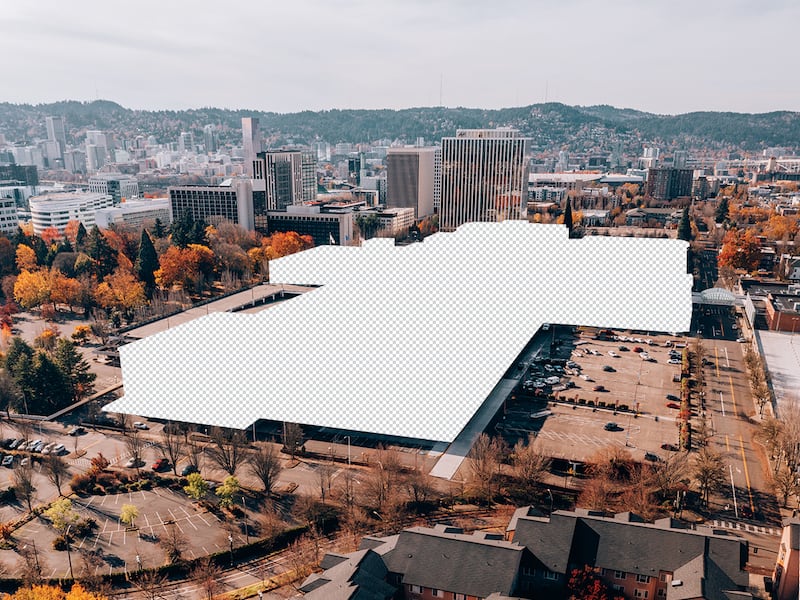
IDEA #1:
Raze the Mall and Bring Back a Green Street Grid
George Crandall has put a lot of thought into the Lloyd Center. In the late 1980s, the Portland architect worked on a new plan for the place that aimed to integrate the mall with the nearby Oregon Convention Center, take advantage of light rail more fully, and make the whole area more walkable.
Now, Crandall says, it’s time to tear the whole place down.
Malls don’t belong in urban environments, says Crandall, an urban planner who has taken on behemoths before: In the 1970s, he led the fight against the Mount Hood Freeway. Malls cannibalize stores downtown, he says, and their Berlin Wall-like façades destroy the street life of a neighborhood.
Instead, what Crandall wants to see is a neighborhood grid that looks more like the commercial corridors Portlanders love best: Southeast Belmont and Clinton streets.
If Lloyd Center were gone, the grid could be restored. Crandall says the city must ensure that new retail shops are concentrated on a few streets with no banks, title companies, or fast food outlets, which reduce foot traffic.
“We’re not all that competent here at establishing retail centers that work,” Crandall says. Take South Waterfront. The stores there are scattered. “They need to be edge to edge,” he says.
Of course, a developer won’t want to spend that kind of money, Crandall says, so Prosper Portland—the city’s economic development agency—must get its hands on the property to make sure the site doesn’t sprout another megalithic structure or rows of crappy condos.
Michele Reeves of Civilis Consultants says restoring a walkable grid in the Lloyd District is also a way of addressing the biggest problem facing humanity: climate change.
Transportation is the largest source of greenhouse gases in the U.S., so cities must get people out of their cars if we’re going to survive, she says. Most American cities, including Portland, are falling down on the job.
“You can’t claim that you are a climate-friendly city and support the widening of I-5,” Reeves says. “The Lloyd District is the place to start putting our money where our mouth is.”
If any part of the city could curb car use, it’s the Lloyd District. It’s close to downtown, and it’s served by lots of mass transit. Reeves says Portland should look beyond the mall and reverse much of the “urban renewal” that blights the Lloyd District: the one-way “car funnels” on Northeast Broadway and Weidler Street, and North Vancouver and Williams avenues; the super-sized blocks that discourage pedestrian traffic; the dead zone around Veterans Memorial Coliseum.
All those things tore the delicate fabric of Portland, where the blocks are smaller than in most cities (200 by 200 feet), creating more corners for stores and an attractive experience for pedestrians.
“The original tapestry that was here at the turn of the century is the most valuable thing we have,” Reeves says.
Kevin Cavenaugh of Guerrilla Development, the company that developed the Fair-Haired Dumbbell at the east end of the Burnside Bridge, is on board with more grid, too. He visited Tucson recently and had to walk an hour and half on huge blocks to get a pizza. “It sucked,” he says. “We are a granular city. Most interesting cities are.”
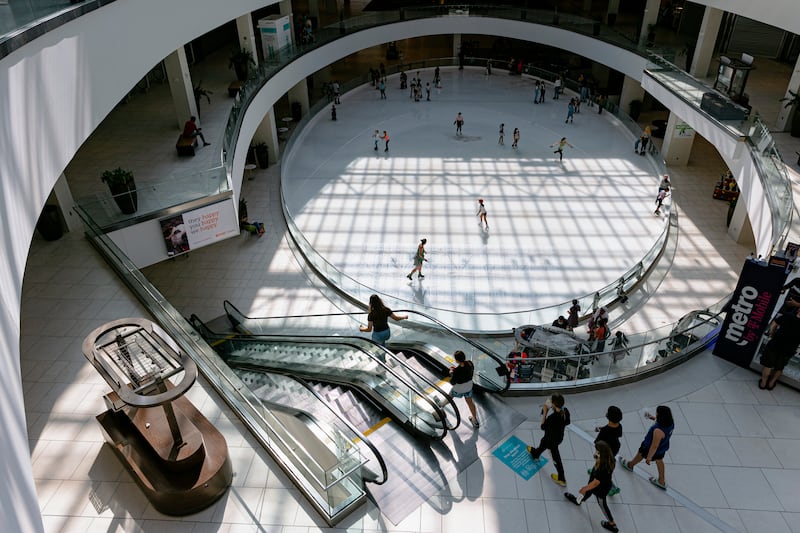
IDEA #2:
A Giant Apartment Building—With an Ice Rink in the Lobby
In the late 1940s, a group of Portland women got fed up with housework, decided to play hooky, and hit the rink at the now-defunct Portland Ice Hippodrome. They called themselves the Hooky Club.
When Lloyd Center opened in 1960, they moved the party to the ice rink there, skating twice a week. They’re still at it, along with lots of other Portlanders. Coaches give lessons in multiple languages.
Lillian Karabaic, host of a Portland podcast that takes financial advice from cats (no, really), skates at Lloyd Center at least five days a week.
Keeping the rink makes good business sense, Karabaic says. Going east from the Willamette River, the next rink you hit is in Bend. There are only four in the Portland metro area—two on the tony westside and another in Vancouver. Ask around and you’re sure to find a friend who plays beer league hockey at 5:30 am because that’s the only time their team can get on the ice.
“The city of Portland is too large not to have a rink,” Karabaic says.
Her idea? Keep it—and build apartments above it.
On the upper floors, Karabaic would like to see transitional housing. The Arcade Providence, the oldest mall in America, is her model. Built in 1828, the Rhode Island building is now home to 48 micro-loft apartments on the upper two floors, with retail, restaurants, and a whiskey bar below.
Robert Liberty of Cascadia Partners, a local urban planning firm, agrees with Karabaic on both points: a rink and affordable apartments. With the Blumenauer Bridge for walking and cycling almost complete above Interstate 84, kids living in the new complex could cycle or walk to the new Benson High School, due to be renovated and reopened for the 2024 school year.
Liberty says the city should keep much of the mall’s structure because its midcentury modern aesthetic would prove popular in the long run.
“Tearing everything down is not my idea of sustainability,” he says.
For the new stuff, Liberty proposes a design competition. Portland doesn’t have a signature architectural style, and a competition for the whole Lloyd District might help remedy that. Just for fun: Judges could say that all the buildings must be timber-frame construction. Milling wood is better for the environment than forging steel, and Portland has a tall wood-frame building already: the eight-story Carbon12 on the corner of Williams and Northeast Fremont Street.
He’d like the competition to be local, too, excluding big names that build a monument to their egos. “I don’t want a starchitect building like the public library in Seattle,” Liberty says. (That was done by Rem Koolhaas and Joshua Prince-Ramus, for those keeping score at home.)
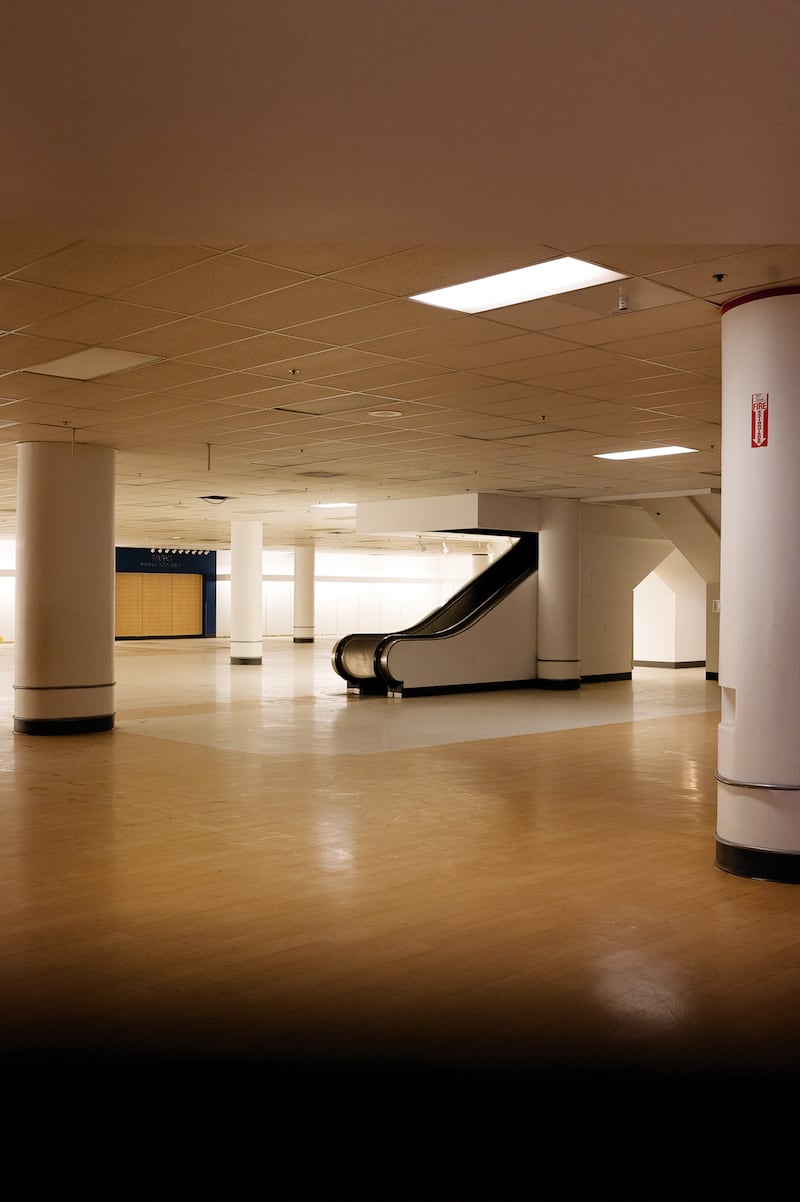
IDEA #3:
A Public Market Like Pike Place in Seattle
Architecture major Nathalie Hutchinson, 30, and a group of students at Portland State University has been eyeing Lloyd Center for months. (Her team includes a biology major, a computer scientist, and a business major.)
They envision a public market like Pike Place in Seattle, with a vast farmers market and lots of small businesses selling second-hand clothing, art galleries, and craft nooks.
High rents make it hard for people to start businesses in Portland. A city-owned center for such businesses could act as an incubator, much the way food carts do for restaurants.
In the big boxes at either end of the mall, Hutchinson’s group would put maker spaces.
Few people know it, but Pike Place Market manages eight apartment buildings, four of which are subsidized by the U.S. Department of Housing and Urban Development and include housing for seniors. Hutchinson and her team think a Lloyd Public Market could do the same. She’d put in public showers and a laundry, too, modeled on the services of Hygiene4All, which operates shower trailers, and launders clothes and bedding for houseless people.
Like Robert Liberty, Hutchinson wants to retain most of Lloyd Center’s structure for environmental reasons and its architectural importance. “It’s one of the last midcentury modern buildings in Portland,” Hutchinson says. “Preserving it as a landmark would be amazing.”
What about the garages that form a perimeter around much of the mall? Hutchinson sees that asphalt jungle becoming a zero-acreage farm, where farmers grow crops in containers. A startup in Vancouver, Wash., called Forward Greens is doing just that.
Also in the garage: a really big skateboard park. “Portland has such a strong skate culture,” she says.
Hutchinson’s group is dead serious about all of this. They are scheduled to present their plan to the Portland City Council on Dec. 15.
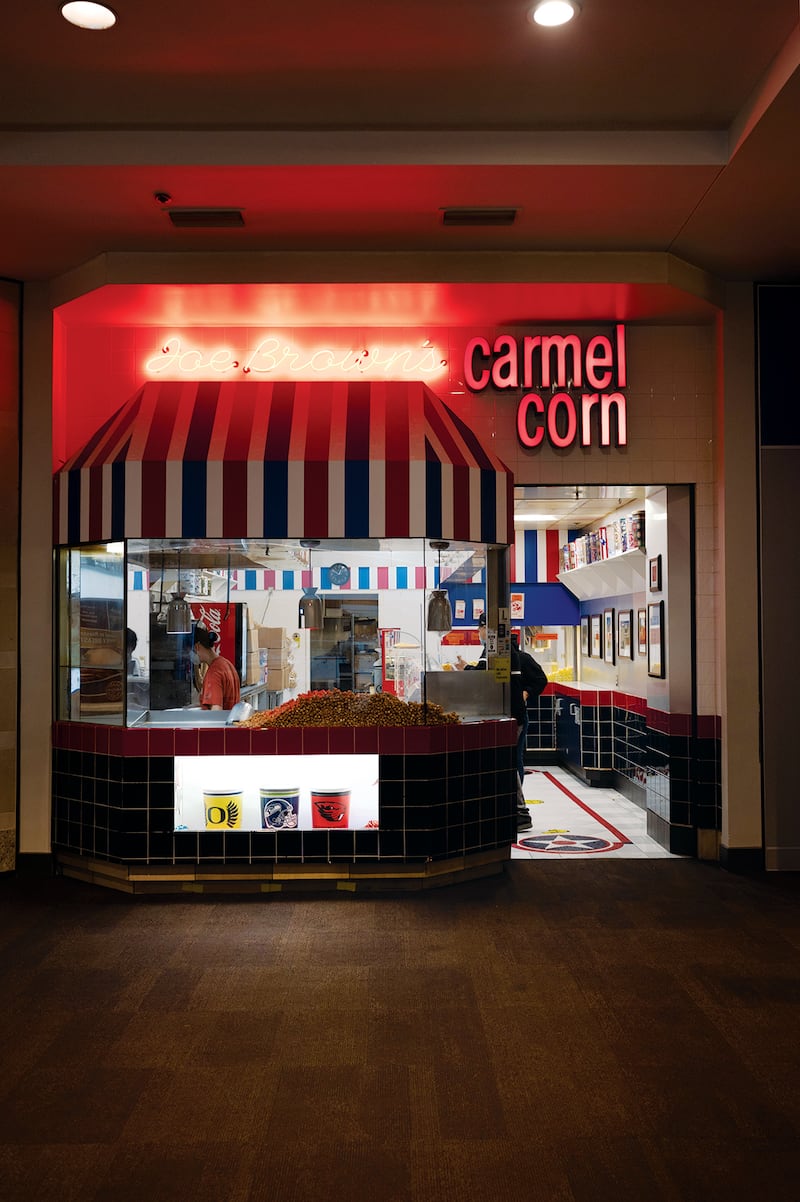
IDEA #4:
A Racial Injustice Reparation With a Museum and Theater
As was often the case in the 1950s and ‘60s, the “urban renewal” that replaced vibrant neighborhoods with a zombie mall, a sprawling hospital, and lots of empty lots took its biggest toll on Black Portlanders, who were evicted in the name of “progress.”
The leaders of Albina Vision Trust, who seek to restore that lost neighborhood, wouldn’t discuss how Lloyd Center might fit into those plans. But Lakayana Drury, founder and executive director of the nonprofit Word is Bond, recommends that the mall be reconfigured to include a museum on the history of race in Oregon and a performing arts center that caters to youth of color.
“All we ever get thrown is sports,” Drury says.
Lloyd Center Mall has long been one of the most diverse places in the central city. Drury argues that civic leaders should recognize the role it came to play in a splintered Black community and formalize it.
“It doesn’t take a rocket scientist to see the needs here,” Drury says.
He sees a market modeled on My People’s Market, which connects Black entrepreneurs with the Oregon travel industry to boost their sales. Kiosks reserved for merchants of color would give them a similar leg up, he says.
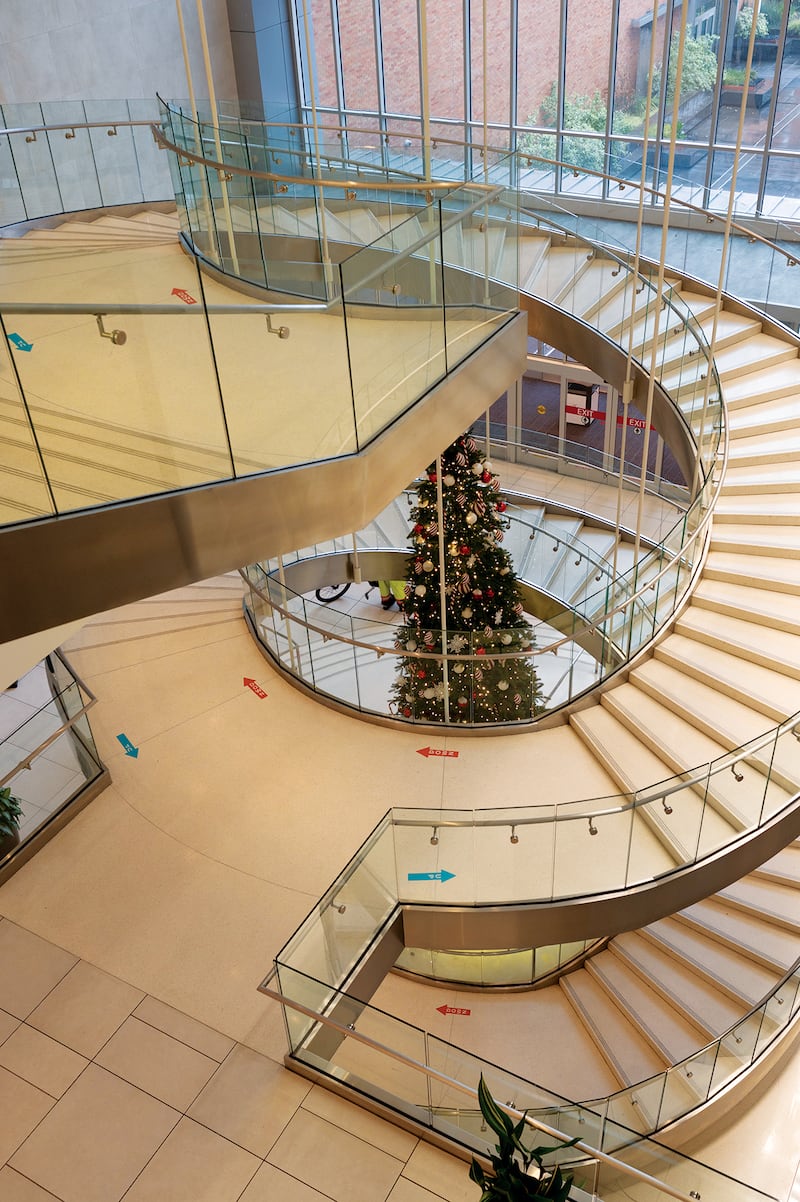
IDEA #5:
Un Hôtel Logistique for America
Parisians, they’re just like us!
People in Paris order food and goods for delivery, but, being French, they’ve found a way around the ghastly warehouses on the fringes of town. French companies build “logistics hotels” from which deliveries can be made right in the city center.
They’re far more than concrete warehouses. One such hotel, the Chapelle International, has tennis courts and an urban farm, according to Wired magazine.
If we’re serious about climate change, we must find a greener way to move goods through the city, says Kelly Clifton, professor of civil and environmental engineering at PSU.
With a logistics hotel in Lloyd Center, companies could ship goods from Portland International Airport by rail, either using special cargo cars on the MAX or via small freight trains. Interstates 5 and 84 pass within less than a mile, so trucks could pull in easily to drop off product. Even the river and the railroad are close by. Once they arrived, goods could be delivered to shops and homes by electric truck, e-bike, or even by drone.
“It’s the most accessible parcel of land in inner Portland,” Clifton says.
A logistics center would generate revenue, which the site will need if it’s going to be something great. “You need something that will pay the bills,” she says.
Lloyd Center already has loading docks, where Macy’s and Nordstrom once took delivery of racks of clothes. But there’s more, as Steve Jobs used to say. You could turn the upper floors into housing for workers on those docks. There could be a BIPOC-owned food court. And a library branch. You could even add small manufacturing, the way a company called Greenpoint Manufacturing and Design Center is doing in New York City.
“It’s an opportunity to live without a car,” Clifton says. That’s even better for the climate.
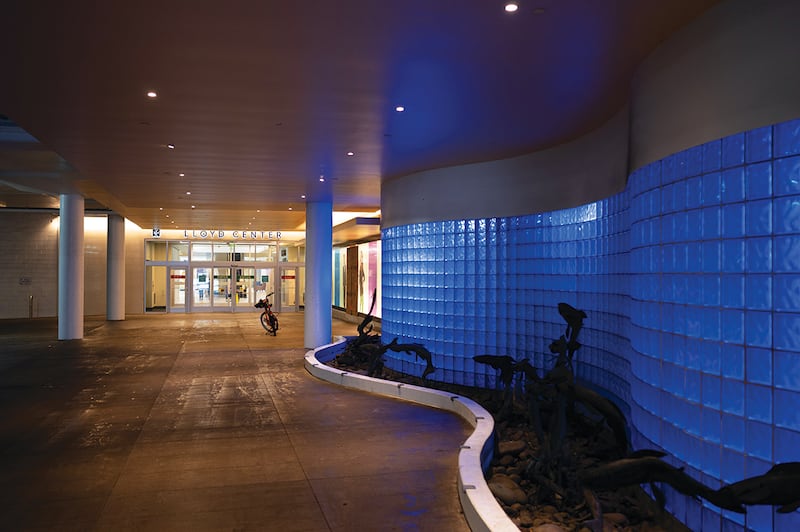
IDEA #6:
The Robot Zoo
Does all of this sound a little too drably practical, too earthbound? Fine. What if we turned the mall into a town for robots?
Artificial intelligence is winning, so we might as well learn to live with it—maybe even make friends. Gary Hirsch, artist and co-founder of On Your Feet, a creative consultancy that uses improv to help companies like Intel, Nike, and Kaiser Permanente, sees a vast space where humans and robots could interact, for fun, for science, for the hell of it.
“You could see how the robot babysitter does with actual babies,” he says.
It would be BattleBots, but less organized. People could bring in robots they build. They could fly drones. There would be a special Mayhem Room where Macy’s was.
“There will be a really long waiver that you have to sign,” Hirsch says.
He proposes a special section, maybe along Weidler Street, where androids and people could take turns selling things to unwitting customers. It would be the Turing Test in action. English mathematician Alan Turing proposed that a machine could be said to be intelligent if a human couldn’t tell it was a machine.
Perhaps an AI Mall seems a little...out there. But outside-the-big-box thinking is what Portland should seek in the Lloyd District. So we want to hear from you: What development do you want to see where the mall now sits?
Send ideas to mall@wweek.com, and we’ll publish one a week until 2022.
